Guide to the New York City Subway
The New York underground is literally a city under the city. Here are some basic tips to help you find your way around and get the most out of the Big Apple's fastest form of transport.
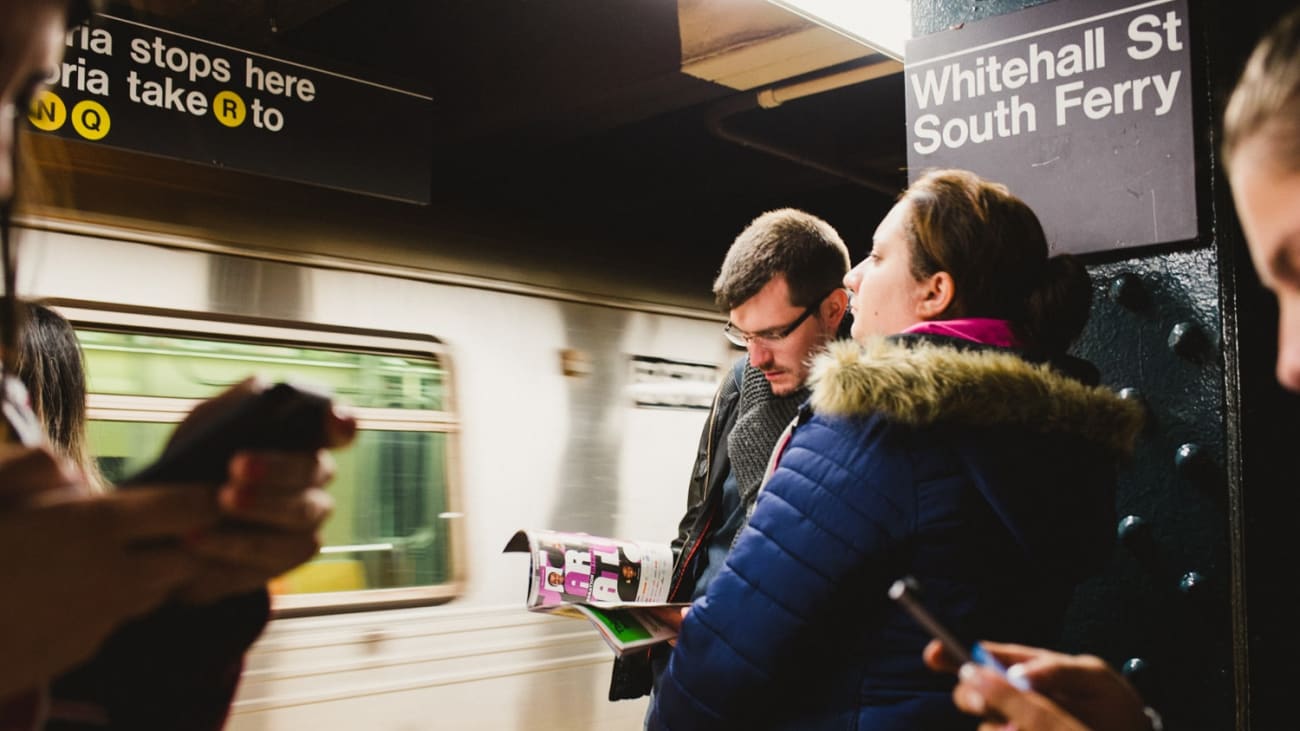
Image of the New York Subway | ©Hellotickets
If you're planning a trip to the Big Apple, transportation is probably something to worry about if it's your first time using it because with so many different lines, stations and types of subways it's easy to get it wrong. Don't worry! In this guide to the New York underground I'll tell you everything you need to know to get around like a New Yorker.
1. Get the New York Subway Map
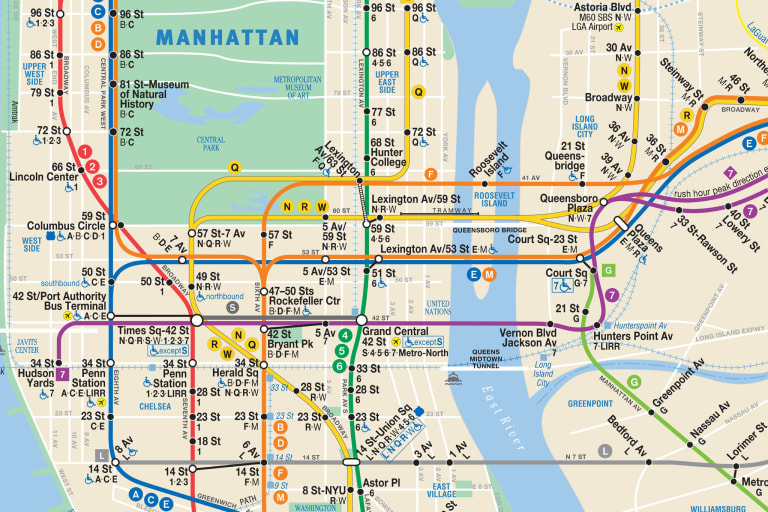
To start with, I suggest you download the New York underground map in PDF on your phone. This way you can always carry it with you and consult it whenever you need it, even when you don't have an internet connection.
However, if you have data on your mobile phone, I recommend you download the official New York City underground app in Spanish as you will not only find the map but you can also calculate the best route to take, the time the next underground will arrive or see the incidents on the lines, among many other things. Here is the iOS version.
2. How much does a ticket cost and how do I buy it? Are there season tickets?
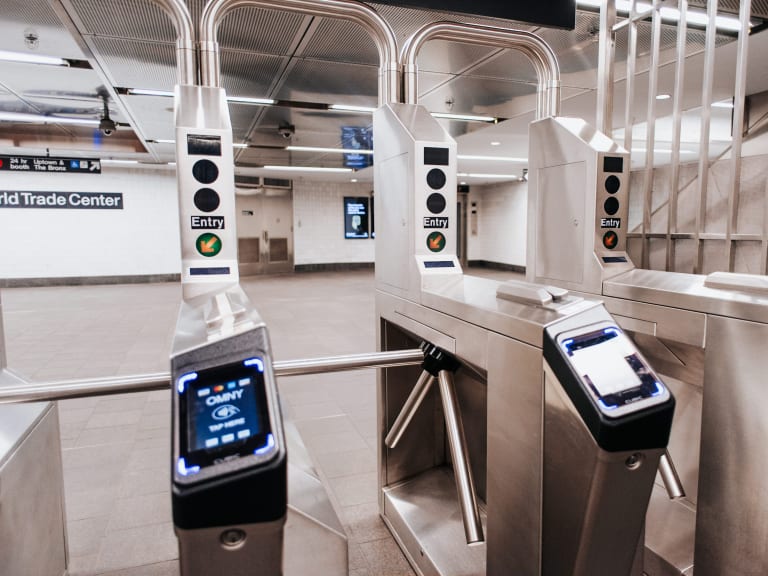
A single ticket on the New York City underground costs $2.90. If you plan to use public transport frequently to get around the city, your best bet is to buy a MetroCard, a reloadable card valid for both the underground and bus.
As in other cities around the world where a similar system is also used, the MetroCard is a public transport card for getting around the city using New York's bus and underground network.
The special feature of the Metrocard is that it can be recharged for:
- Single rides (Pay per Ride)
- Unlimited rides for 7 days
- Unlimited rides for one month
3. How to get the Metrocard?
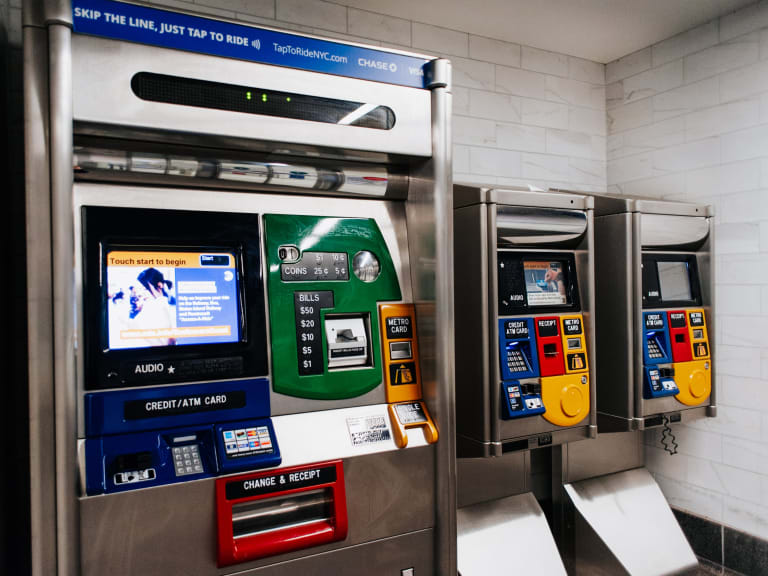
- To get your Metrocard you must go to any metro station, where you will find the ticket machines.
- Once you have selected your language at the machine, all you have to do is choose the type of card you want from the available options.
- If you are buying a Metrocard for the first time, you should choose the option "Get a new card" which has a $1 fee.
- If you already have a Metrocard from a previous trip, simply select the "Reload your card" option and enter the balance you want.
How to buy it at the machine step by step
- After selecting the option "Get a new card" you must choose the type of Metrocard: Regular Metrocard and Unlimited Ride.
- Within the Unlimited Ride option there are two possibilities: "Unlimited rides for 7 days for $33" and "Unlimited rides for one month for $120".
- Most commonly, commuters choose the "Unlimited Ride for 7 days for $33" option. In a city as big as this you will get a lot out of it because there are long distances and with this Metrocard you can hop on and off the New York bus or underground as many times as you need.
- The next step is the method of payment. You can use cash, bank card (ATM) and credit card.
- When you insert your card, the vending machine will ask you for a zip code. As a tourist you will not know the postcodes of the city , you can enter the number 00000 or 99999.
- And that's it! The ticket machine will issue your Metrocard and you can start using it.
What happens if I have both credit and unlimited travel on my card?
If you have both credit and unlimited travel on your Metrocard for 7 days, you will first use up the travel for that week and then the dollar balance will start to be used up. In other words, unlimited travel takes priority over the balance for individual trips.
Do children pay on the metro?
Children under 44" (111 cm) can travel for free when accompanied by a paying adult. Babies are also free until they are two years old.
How do I validate my Metrocard?
It may seem obvious, sliding the card through the slot on the turnstile, but the trick is to do it at an intermediate speed so that the machine's reader can read the Metrocard properly. In other words, not too fast and not too slow.
At this point I would like to make an aside, and that is that if when you enter the metro you get the wrong entrance and you have to go back out into the street to get to the correct station, you will find yourself in two situations:
- If you have chosen the Metrocard with unlimited travel, you will have to wait 20 minutes to validate your card at the turnstile.
- If you have loaded your Metrocard with a balance in dollars, you will be asked to pay for the journey again. In other words, another $2.90 will be deducted from your balance. Unfortunately, it is not possible to request a refund for the previous wrong trip.
Frequently asked questions about the Metrocard
- Can I buy the Metrocard before travelling to New York? No, you can only buy the Metrocard at the vending machines in the underground. You can find more information in this article about the New York subway.
- If I have any doubts when I buy it, will someone help me? No. In many stations you will find underground staff that you can ask for help, but if there are not, don't worry because New Yorkers are very attentive and will give you a hand if you need it.
- If I travel for two weeks in New York, should I buy two cards? No, you don't. Once you have used up your 7-day Unlimited Ride voucher, you can reload the same card with credit or another Unlimited Ride voucher for another week.
- Can I share the Metrocard with another person? No. If you choose the 7-day Unlimited Travel option, the card is for personal use and is not transferable. However, if you choose to load it with credit and pay for each journey, then you can share your Metrocard.
- What happens if I lose my Metrocard? Unfortunately you will have to buy a new card and you will lose all the balance and/or value you have on it. Only the MetroCard "Unlimited travel for one month" is protected against theft and loss if you buy it with a debit or credit card from the Metro vending machines.
- How do I know how much credit I have left on my card? If you have been topping up your card and don't know how much credit you have, in many metro stations you can check it at card readers that will tell you the balance, the days you have left and when the card expires.
- If I have a balance left on my card, do I get my money back? No, so my advice is to be careful when topping up your card. In any case, the Metrocard is valid for 2 years, so if you have money left over, I recommend that you keep the card for your next trip to the city or give it to someone else who will be travelling to New York.
- Can the Metrocard be used for other transport? In addition to the New York underground system, this card can be used on the bus network and the Roosevelt cable car. If you want to take a ferry, you will have to pay a separate ticket as it is not integrated into the Metrocard. If you'd like to know more about the ferry, don't miss my handy guide to the New York ferry.
4. Getting your bearings: express trains, line directions and the meaning of the letters
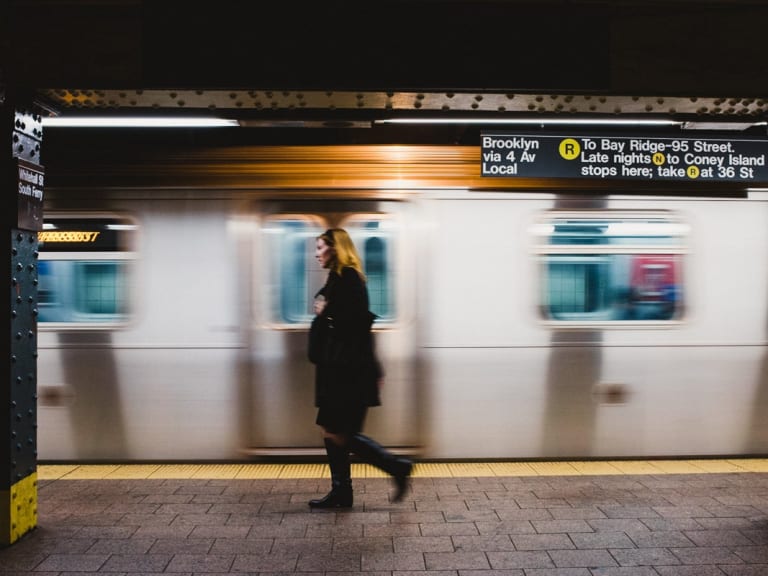
Once you've got your ticket in hand, you'll need some guidance to avoid getting lost on the largest underground in the United States and one of the largest in the world. It has 26 lines, almost 500 stations and over 1000 kilometres of track connecting Manhattan, Bronx, Brooklyn and Queens.
The only borough not served by the New York underground is Staten Island, although you can drive from Brooklyn or from southern Manhattan on the Staten Island Ferry.
The New York underground lines are colour-coded and each line can be bifurcated into letters (A, B, C, etc.) and numbers (1, 2, 3, etc.) depending on the direction, so to avoid getting lost it's a good idea to follow the tips below:
Know where you're going
When taking the metro be sure of the direction you want to go as most lines split and trains take different directions.
Once you know which line to take, go to the nearest metro stop. All stations are signposted at the entrance to the southbound (Downtown and Brooklyn) or northbound (Uptown and Queens) platforms.
When boardingthe underground, pay attention to the signs and signals. Signs and loudspeakers indicate which direction the train is heading, showing the last stop on the route or which borough in New York City the train is heading towards.
Local vs. express trains: how to tell them apart
An important detail to note is that there are two kinds of trains in New York : local trains and express trains. Unlike the local trains, the express trains don't stop at every stop and are much faster, making them very convenient for long distance travel. It's great because you can cross the city in less than 15 minutes!
So how do we know where an express or local metro stops? Very easy, if on the map you see that the stop has a white circle it is an express train, if it has a black circle then it is a local train.
Pay attention to the letters and numbers
Each New York underground line has a different colour to identify them, but because at certain points on the map they branch off, to avoid the map turning into a multicoloured rainbow, each branch is given a different name with numbers and letters.
Therefore, when taking the underground, you should take as a reference not only the colour of the line but also the letters and numbers. In fact, New Yorkers know the lines better by the numbers and letters, not so much by the colours.
And where can I see the letter or number of the underground to know which one I'm getting on? It appears on the first car of the underground, although it is also posted outside each car so you can check it. Keep it in mind if you need to ask for directions or routes on the underground.
Look at the direction of metro stations
As I said before, if you look at the New York underground map you can see that there are underground lines that go in different directions by forking two or more times (such as the orange or yellow line).
The first thing you should know before using it is to distinguish correctly between Uptown and Downtown. Sometimes in the same underground station, the different entrances have different directions, i.e. in many streets, if you enter from one pavement entrance you go south and from the other side you go north.
Therefore, before getting off the metro, I advise you to check the direction so that you don't have to go back out onto the street and change direction, because in many cases, once inside the station, you can no longer change platforms.
The directions that the New York underground can take are: Downtown and Uptown (South and North) or Westbound and Eastbound (West and East).
Sometimes you will also see that they indicate the district or neighbourhood they are travelling to:
- Manhattan
- Queens
- Brooklyn
- Bronx
- Etc.
Transfer between lines?
If we look at the New York underground map, we might think that it is not possible to transfer between lines unless it is indicated that they cross. But this is not always the case, as the map shows black lines that warn of the existence of transfer tunnels that make it easier to change lines so as not to make unnecessary journeys.
5. What is the New York underground schedule and frequency?
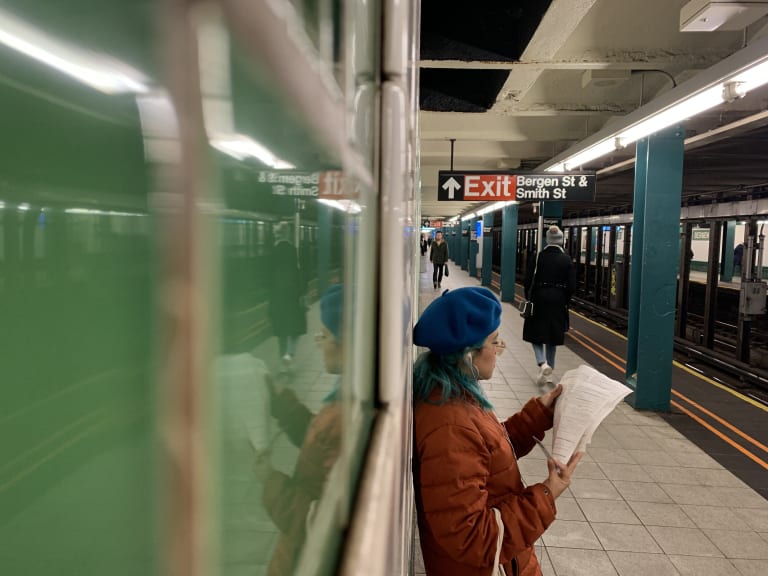
The great thing about the New York underground is that it runs 24 hours a day, every day of the year, but at night not all station entrances are open.
It ranges from 2 to 5 minutes during peak hours (6:30 AM to 9:30 AM and 3:30 PM to 8:00 PM Monday to Friday), 5 to 10 minutes at midday and 5 to 15 minutes until midnight. The frequency of the metro from early morning to 6:30 AM is approximately 20 minutes, although at night I would advise you to take a taxi, especially if you are travelling alone between districts, as there are few operators working in case of any incidents.
6. Tips for using the New York underground

The New York underground is not so different from other subways in the world in terms of rules of use. However, as a commuter it is always a good idea to keep in mind some basic rules to make travelling on the network easier.
- In the subway cars, always let yourself out before entering.
- Do not block the car doors with your luggage to allow people to enter and exit.
- When using the escalators, if you walk up or down them, always use the left side. Otherwise, sit on the right-hand side to make it easier for other passengers.
- Give up your seat to people who may need it (the elderly, pregnant women, the disabled, etc.).
- Do not occupy other seats with your belongings. Seats are for the use of other passengers.
- Avoid eating or drinking inside the carriage during journeys out of respect for other passengers.
- Do not stare at people on the metro or platforms.
7. Step inside New York's ghost underground station
The streets of New York are fascinating, there is always something new to discover in the city that never sleeps. There are plenty of tourist attractions on the surface but not many know that beneath it lies a secret site known as the ghost underground station of City Hall, which for a long time was plunged into darkness.
Its enigmatic name alone makes you want to find out what it's all about, doesn't it? All you have to do is get on the New York underground and take line 6 to the end of the line as the train continues to travel through this station. After Brooklyn Bridge you can pass by the ghost station of City Hall and look down on it from inside the car.
Unfortunately, you can't go down to the station to see it, but at least the underground runs at such a slow speed that with a little skill you can take several photos of this piece of New York history, which tells us about the origins of this public transport at the beginning of the 20th century.
What is the New York underground ghost station like?
City Hall was never a popular station for New Yorkers, as most got on and off at the nearby Brooklyn Bridge. Eventually, for various reasons, it was closed to the public in 1945.
Perhaps this has allowed it to remain in such good condition, as have the original stained glass windows, chandeliers and stained glass windows that decorate it. In fact, many people find it similar to the decoration of Grand Central Station, what do you think?
Another way to get a glimpse of City Hall's ghost station is from above ground. In the middle of City Hall Park is a space reserved for pets. If you pay attention, here you'll see an iron opening from which you can peek inside the structure. Amazing, isn't it?
The elegance and style of the design of this stop was striking in comparison to the others that made up the metro network at the time. City Hall had glass windows through which natural light penetrated and vaulted ceilings lined with tiles clearly influenced by the Spanish architect Rafael Guastavino, whom the New York Times dubbed after his death "the architect of New York" for his famous "Guastavino tile" and his great contributions to American architectural design.
8. More things to do in New York!
But New York's ghost underground station isn't the only secret place in the city- there are plenty of original things to do and unique places to explore! In the article 10 secret places and original plans you can't miss in New York I tell you about some of them.
And if all this sightseeing is giving you an appetite, then I recommend you take a look at the article 10 best places to eat in New York to find out where to have a good meal. Here you come to enjoy yourself and have a good time!
